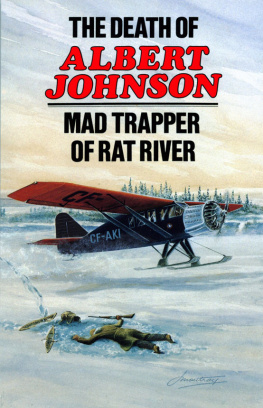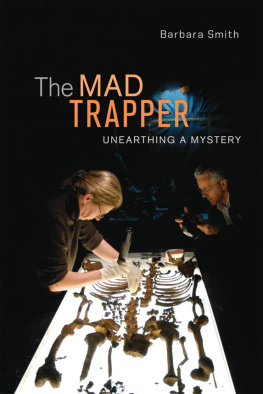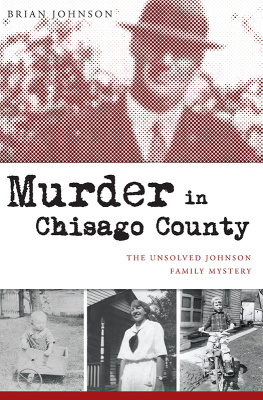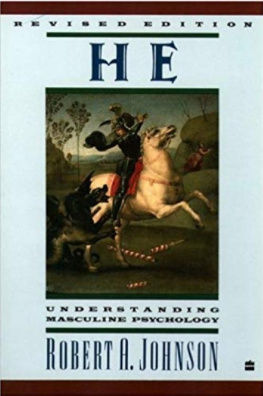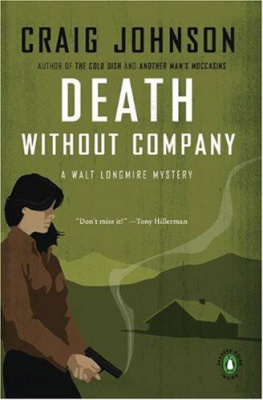Copyright 1986, 2000 Heritage House Publishing Co. Ltd.
All rights reserved. No part of this publication may be reproduced, stored in a retrieval system or transmitted in any form or by any meanselectronic, mechanical, audio recording or otherwisewithout the written permission of the publisher or a photocopying licence from Access Copyright, Toronto, Canada.
Published by Heritage House Publishing Co. Ltd. in 2000 in softcover with ISBN 978-1-894384-03-2.
This electronic edition was released in 2011.
e-pub ISBN: 978-1-926613-26-0
e-pdf ISBN: 978-1-926613-61-1
Cataloguing data available from Library and Archives Canada
Heritage House acknowledges the financial support for its publishing program from the Government of Canada through the Canada Book Fund (CBF), Canada Council for the Arts and the province of British Columbia through the British Columbia Arts Council and the Book Publishing Tax Credit.

www.heritagehouse.ca
THE DEATH OF ALBERT JOHNSON
MAD TRAPPER of RAT RIVER

Glenbow Archives
F.W. Anderson and Art Downs

Acknowledgements
Appreciation is expressed to those who assisted in preparing this book: John Millen, Ladner, B.C.; Staff Sergeant T.E.G. Shaw, RCMP, retired; Arthur Know and Elmer Scott, Calgary, Alberta; Georgina Barrass and Margaret Howson, Glenbow Foundation, Calgary, Alberta; and personnel of the RCMP Museum, Regina, Saskatchewan.
The Cover
This painting by John Moutray shows the Bellanca aircraft piloted by Wop May skimming over the Eagle River as the pursuit of Albert Johnson reached its climax.
Johns subjects include wildlife, dogs, and aircraft. The latter is his favourite, which is not surprising since John served in the RAF and the RCAF during World War II, winning both the DFM and DFC. A former art director of Evergreen Press, John retired in Langley, B.C.
CONTENTS

Wop Mays Bellanca aircraft, here being loaded with supplies from the Aklavik Hudsons Bay Company store, played a prominent role in the Albert Johnson manhunt.
Wop May
Trouble on the Rat River
Two kinds of patrols were carried out by Constable Edgar Millen and his two-man detachment of Royal Canadian Mounted Police at Arctic Red River, a tiny settlement just south of the Arctic Circle. The first were routine patrols whereby the detachment visited isolated cabins, delivered mail, discreetly checked on men who wanted to be left alone, and performed a hundred and one civil service duties throughout the region. The second were special patrols; that is, trips made for a specific reason such as a mercy mission, escort duty for a visiting dignitary, or investigation into a reported crime. An interesting aspect of the work was that the policemen were never certain until the patrol was completed if it was a routine or a special mission.

The Rat River near the Arctic Ocean. In sub-zero cold during the winter of 1932 it made headlines across North America.
Glenbow Archives
The patrol that set out on July 20, 1931, started as a routine one. It was destined to end in tragedy.
Constable Millen was born in Belfast, Ireland, in 1901. Prior to emigrating with his parents to Canada, he had attended the tough Curragh Camp, a military school for boys where he acquired a lifelong distaste for routine, spit and polish. In spite of this aversion, however, he joined the Royal Canadian Mounted Police in 1920. After several postings to Regina, Winnipeg and Edmonton, he volunteered for northern duty and was sent to Aklavik, headquarters of the Western Arctic Sub-District, in June 1923. From then on most of his service was in the Northwest Territories, broken only by brief holidays with his family in Edmonton. One other diversion from the routine occurred after his superiors learned that he was the finest pastry cook in the northland. This talent did not go unused, especially when notable travellers such as the Governor-General visited Aklavik.
In the summer of 1931 on his return to Aklavik from a holiday in Edmonton, Millen was offered a Corporals stripes and the post at Arctic Red River, a small base some 110 km (70 miles) south of Aklavik. Because of his dislike for paperwork he declined but reckoned without the sardonic humor of his superiors. It wasnt long before Millen found himself in charge of the detachment, minus the stripes, but saddled with the paperwork.
One of Constable Millens duties on his July patrol to Fort McPherson 80 km (50 miles) to the west of his small post was to check on a newcomer to the district. From a radio report out of Aklavik, Millen learned that a man named Albert Johnson had arrived at Fort McPherson on July 9, after rafting down the Peel River from the direction of Dawson. News of his arrival had been taken to Aklavik by Bishop Geddes. A routine order to investigate was issued by the Commanding Officer of the Western Arctic Sub-District, Inspector A.N. Eames.
The RCMPs interest in Johnson was not aroused by suspicious actions but reflected the forces concern for individuals moving into the north. The Depression of the thirties was worsening throughout Canada and men with a distaste for civilization and its breadlines constantly sought to escape into the northern wilderness. Because many arrived without money and were poorly equipped to survive in the harsh north, the police discouraged them from settling even briefly in the Arctic. This was Millens purpose in seeking out Albert Johnson.
Millen reached Fort McPherson on July 21 and had no difficulty finding Johnson who was camped a short distance from the community. He was a man of about forty years, of medium height and weight, with receding brown hair and diffident blue eyes. A man without striking features, except for his arms which seemed longer than normal for a man of his height.
Millen received a cool reception and little information from the taciturn Johnson. Apparently he had spent the summer of 1930 on the Canadian prairies and entered the north via the Mackenzie River system, but he made no mention of where he had spent the previous winter. He told Millen he intended to go into the Rat River country some 30 km (20 miles) north and west of Fort McPherson as soon as he had replaced his outfit which he said he had lost.
There was little Millen could do, but he left Johnson with the warning that if he planned to trap in the Rat River district, he would have to obtain a licence from either Arctic Red River or Aklavik. Back at Fort McPherson, the Constable made a few enquiries. Although Johnson had only a meagre outfit he appeared to be well supplied with money, since he had purchased a 16-gauge single-barrel shotgun and a box of shells from the Northern Traders store, and was buying supplies from the Hudsons Bay post. In his dealings, however, he had been close-lipped about his past and immediate plans.

Next page
